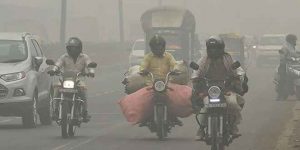World Bank Report On Air Pollution:

The World Bank released a report titled ‘Striving for Clean Air: Air Pollution and Public Health in South Asia’.
- The report details how persisting with policies currently being implemented (largely since 2018) will yield results but not to the desired level.
Highlights of the Report:
- Six large airsheds exist in South Asia, where the air quality in one can affect the air quality in another. They are:
- West/Central Indo-Gangetic Plain (IGP) that included Punjab (Pakistan), Punjab (India), Haryana, part of Rajasthan, Chandigarh, Delhi, Uttar Pradesh.
- Central/Eastern IGP: Bihar, West Bengal, Jharkhand, Bangladesh
- Middle India: Odisha/Chhattisgarh
- Middle India: Eastern Gujarat/Western Maharashtra
- Northern/Central Indus River Plain: Pakistan, part of Afghanistan; and
- Southern Indus Plain and further west: South Pakistan, Western Afghanistan extending into Eastern Iran.
- When the wind direction was predominantly northwest to the southeast, 30% of the air pollution in Indian Punjab came from the Punjab Province in Pakistan and, on average, 30% of the air pollution in the largest cities of Bangladesh (Dhaka, Chittagong, and Khulna) originated in India.
- In some years, substantial pollution flowed in the other direction across borders.
- Currently over 60% of South Asians are exposed to an average 35 µg/m3 of PM2.5 annually.
- In some parts of the IGP it spiked to as much as 100 µg/m3 – nearly 20 times the upper limit of 5 µg/m3 recommended by the World Health Organisation (WHO).
- Large industries, power plants and vehicles are dominant sources of air pollution around the world, but in South Asia, other sources make substantial additional contributions.
- These include combustion of solid fuels for cooking and heating, emissions from small industries such as brick kilns, burning of municipal and agricultural waste, and cremation.




